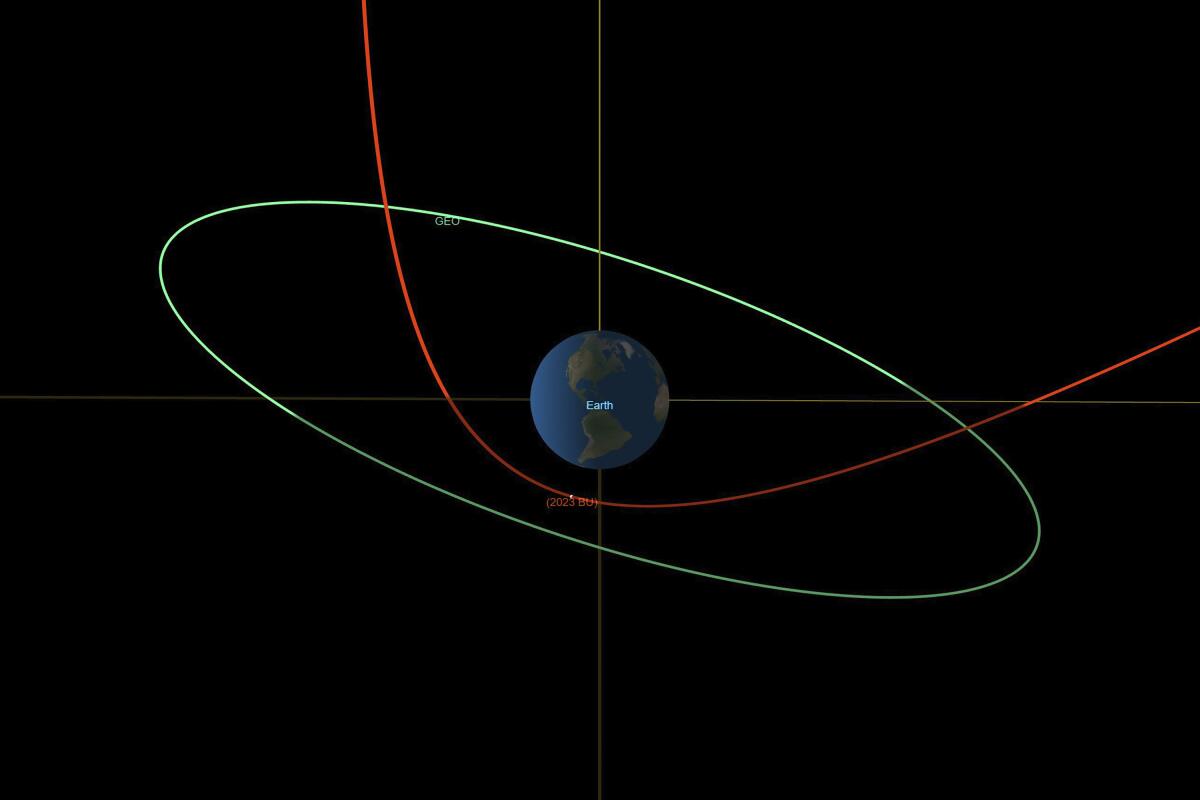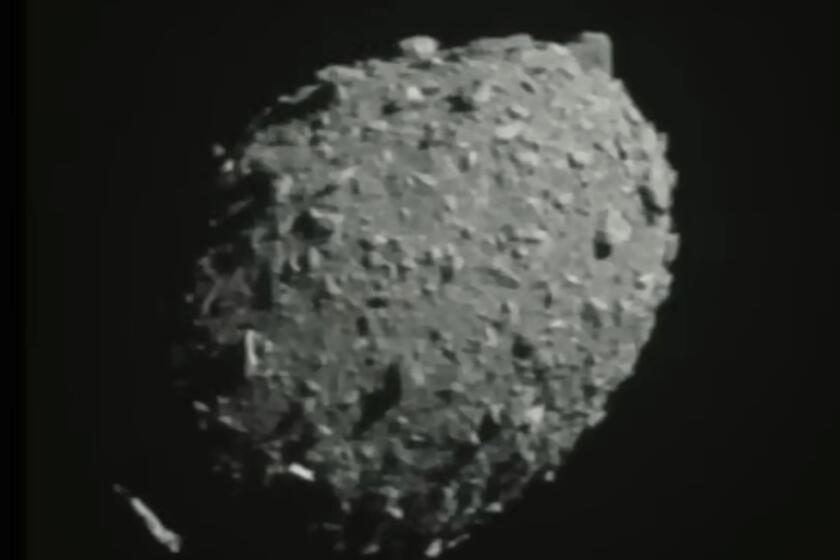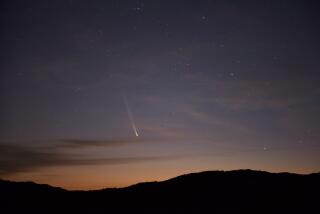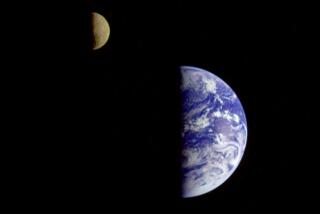An asteroid will come extremely close to Earth on Thursday — but will miss us, NASA says

- Share via
CAPE CANAVERAL, Fla. — An asteroid the size of a delivery truck will whip past Earth on Thursday in what is expected to be one of the closest such encounters ever recorded.
NASA insists that it will be a near-miss, with no chance of the asteroid hitting Earth.
The agency said Wednesday that the newly discovered asteroid, known as 2023 BU, will zoom 2,200 miles above the southern tip of South America. That’s 10 times closer than the bevy of communication satellites circling overhead.
The closest approach will occur at 4:27 p.m. PT.
Even if the space rock came a lot closer, scientists said most of it would burn up in the atmosphere, with some of the bigger pieces possibly falling as meteorites.
NASA’s impact hazard assessment system, called Scout, quickly ruled out a strike, said its developer, Davide Farnocchia, an engineer at the Jet Propulsion Laboratory in Pasadena.
NASA says a spacecraft that plowed into a small, harmless asteroid millions of miles away last month succeeded in shifting its orbit.
“But despite the very few observations, it was nonetheless able to predict that the asteroid would make an extraordinarily close approach with Earth,” Farnocchia said in a statement. “In fact, this is one of the closest approaches by a known near-Earth object ever recorded.”
Discovered Saturday, the asteroid is believed to be 11 feet to 28 feet across. It was first spotted by the same amateur astronomer in Crimea, Gennady Borisov, who discovered an interstellar comet in 2019. Within a few days, dozens of observations were made by astronomers around the world, allowing them to refine calculations of the asteroid’s orbit.
The asteroid’s path will be drastically altered by Earth’s gravity once it zips by. Instead of circling the sun every 359 days, it will move into an oval orbit lasting 425 days, according to NASA.
More to Read
Sign up for Essential California
The most important California stories and recommendations in your inbox every morning.
You may occasionally receive promotional content from the Los Angeles Times.











